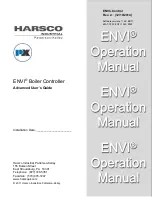
RZN 43xx-E
15/16
99.821.70 3.5/01/12
Every six months and after maintenance carried out by a specialist
engineer or trained staff.
Visual inspection:
Clamps and fastenings
Drives and smoke vent
Attention
Automatic fire detectors
Procedure in the case of alarm:
Do not carry out functional testing if
trigger plug-in card AE 526-DG is
installed for the control of 8 pressure
gas generators.
Closing after automatic release by smoke detector:
Procedure in the case of alarm with external control:
- Eliminate any errors immediately
- Fill out the logbook
- Advise that the system is going to be taken out of operation before starting
the inspection
- Inform the operating company that the alarm is going to be triggered for
equipment testing purposes
- Interrupt or turn off remote alarm reporting or remote control
Check all appliances and cable connections for outer damage and dirt
accumulation.
Fire detectors, smoke vent buttons, smoke vents and so on must not be
impaired in their function by goods in storage or structural changes.
-
Check connection terminals and fastenings of appliances that they are
securely seated.
-
In the case of excessive dirt accumulation and load, clean and re-grease
outer mechanically moved parts.
: Use only colourless fat-free Lusin A spray. Do not use any
grease so that dirt cannot stick.
-
In the case of severe externally visible dirt accumulation or false alarms,
send them in for maintenance and install an exchange detector. Check
detectors individually with D+H-smoke detector tester.
No possibility of functional testing. Triggering will lead to the destruction of
the pressure gas generators and sprinkler bottles as well as the emptying of
the CO cartouches. This will generate costs for exchange parts and the time
to install them. Shutdown of the system by a specialist company or trained
staff.
1. Open smoke vent button.
2. Open the system first with vent button and then close it again.
3. Trigger smoke detector with D+H-smoke detector tester.
4. Response delay approx. 20 seconds
5. Red display LED in the smoke vent button must light up.
6. Smoke vent opening must open.
1. Wait until there is no more smoke in detector. Switch the line on / off at the
control panel with reset button.
2. Press concealed button
in smoke vent button; smoke vent closes.
3. Red display LED
in button and on line plug-in unit goes out.
1. Trigger external control, if available.
2. Smoke vent opening must open.
2
Please note: Always activate another smoke vent button or smoke detector
for each line with every new test.
Closing after automatic triggering by external control:
Check alarm display and balanced running of all drives up to final
position.
Emergency supply:
Accumulator:
If the voltage of one
of the accumulators is less than 11V, both the accumulators must be
replaced.
1. Open contact in external system, e.g. by resetting the fire alarm system.
2. Press concealed button
in smoke vent button; smoke vent closes.
3. Red display LED
in button and on line plug-in unit goes out.
- Switch off main fuse at distribution box.
- Green control diode
in smoke vent buttons should not light up.
Repeat functional testing.
- Green mains indication diode
on control panel should not light up.
- Ventilation is out of service.
Yellow display LED
on the central unit circuit board must light up.
- Check accumulator type.
- Contacts and housings must be clean and tight.
- Check fully charged accumulators that have not yet been used for correct
open-circuit and on-load voltage using D+H accumulator tester, in
accordance with the testing table:
- Measure the open-circuit voltage (alternatively using a digital
voltmeter); every accumulator must have between 13.5 and 13.9 V.
- Measure the on-load voltage. For this, open the system completely
twice via vent button. On the third time, measure the voltage during the
process.
The voltage of each accumulator must be at least 11 V.
Charging voltage:
Charging voltage is factory-set!
-
Disconnect accumulator for checking.
-
Substituded
-
Compare voltage with table, using a calibrated 3½-digit digital
voltmeter and a calibrated thermometer.
, connect 10 kΩ resistors to accumulator
output.
Surrounding temperature in
battery height
Charging voltage
15°C
27,52 - 27,92 V
16°C
27,49 - 27,89 V
17°C
27,46 - 27,86 V
18°C
27,42 - 27,82 V
19°C
27,39 - 27,79 V
20°C
27,36 - 27,76 V
21°C
27,33 - 27,73 V
22°C
27,30 - 27,70 V
23°C
27,26 - 27,66 V
24°C
27,23 - 27,63 V
25°C
27,20 - 27,60 V
26°C
27,17 - 27,57 V
27°C
27,14 - 27,54 V
28°C
27,20 - 27,50 V
29°C
27,07 - 27,47 V
30°C
27,04 - 27,44 V
31°C
27,01 - 27,41 V
32°C
26,98 - 27,38 V
33°C
26,44 - 27,34 V
34°C
26,91 - 27,31 V
35°C
26,88 - 27,28 V
Examination
OK
OK


































